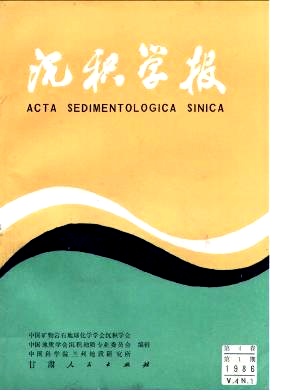DIAGENETIC DEUTEROGENIC CHANGE OF OPHIOLITIC SEDIMENTARY ROCKS AND ITS GEOLOGICAL SIGNIFICANCE IN THE RIKEZE AREA, SOUTH TIBET
- Received Date: 1984-03-16
- Publish Date: 1986-03-10
Abstract: In the famous Rigeze area of South Tibet,ophiolitic sedimentary rock series with thickness of hundreds metres, is extensively outcropped in the upper part of the Yaluzangbu ophiolite suite. It obviously deposits on the dark-purple or grey-green pillow-shaped lavas and sheeted dikes and belongs to the late Jurassic and early Cretaceous age. The ophiolitic sedimentary rocks can be divided into three sections from bottom to top: 1 .Ophiolitic slumping deposits; 2 .Ophiolitic clastic deposits with zeolite layer; 3 .Fine-clastic tuffaceous mudstones with carbonatite layer. The main rock types are ophiolitic slumping accumulation rocks, ophiolitic graywackes, zeolite, tuffite, tuffaceous silty mudstones, carbonatite, ect. As the rock series has a close relation to thp ophiolite suite, the source of deposits is mainly from the underlying basic lava, denudation materials of sheeted dikes and differentiated materials of contemporaneous volcanic-lava. However, a lot of terrigenous components have gradually been to the upper part of the rock series. These complex sediments underwent different chemical and physical actions on the unique geological background in the whole diagenetic process. As a result, distinct changes of the original sediments took place. They are mainly as follows: 1 .Formed by the different iation of volcanic materials and the disintegration of basic lavas,the clay minerals have changed into illite and chlorite, with the exception of a little remainig montmorillonite and kaolinite. This kind of stable clay-mineral compositions shows that they have been in the late stage of diagenetic deuterogenesis. 2 .In the whole rock series, though there is less carbonalite, it has commonly recrystallized. The strong resorption and replacement of other clasts in rocks can obviously be seen, and the boundary of grains is vague and bay-like. Some horse-stones of volcanic clastic rocks are almost replaced by carbonatite, In addition, most of the clasts have the shadew structure of original grain outline and every grain around the replacement remains forms into a "cross extinction lump." 3 .A large amount of volcanic glass in the lower sediment-tuff has changed inot microlitic quartz or chalcedonite quartz, but some still have irregular appearance specifically possessed by volcanic glass, while radiolarian siliceous rocks in tuffite bud are composed of siliceous ooze. Its opal and cristobalite,through dewatering, compressing and burying, changed into chalcedonite, and then became chalceonitic quartz and microlitic quartz. After being filled with siliceous materials, a large amount of radiolarian in radiolarian siliceous was crystallized into chalcedonite quartz. Microlitic quartzs are of good euhedral crystal under the scanning electron micriscope. 4 .In the lower part of the rock scries, besides scattering zeolite discoved in graywacke also a few layers of zeolite rocks, which are composed of lau-montite, authigenic prehnite, quartz, etc. According to the characteristics of mineral composition, the laumontite is composed of plagioclase and volcanic rocks which formed in the diagenentic process. In this special sedimentary strata,the change of diagenesis becomes greater and greater from top to bottom. The upper sedimentary bed is in the mudstone form. A great amount kaolinite is still reserved in clay minerals. With the depth increasing most clay minerals were transformed into illite and chlorite, and a lot of volcanic glass and authigenic quartz had been transformed into illite and chlorite,and a lot of velcanic glass and aulnigenic guartz had been transformed into chalcedonite quartz or microlitic quartz. At the same time, microlitic authigenic formed, too. Scattering zeolite minerals began to appear until some typical minerals of the late stage of diagenesis dueterogenesis appeared, such as laumontite and prehnite. These mtneralogical changes represent a complete diagenesis. Although this sedimentary rock series is not very thick, its diagensis changes are great. The factors influencing the diagenesis t
| Citation: | Wang Dongan. DIAGENETIC DEUTEROGENIC CHANGE OF OPHIOLITIC SEDIMENTARY ROCKS AND ITS GEOLOGICAL SIGNIFICANCE IN THE RIKEZE AREA, SOUTH TIBET[J]. Acta Sedimentologica Sinica, 1986, 4(1): 77-85. |






 DownLoad:
DownLoad: